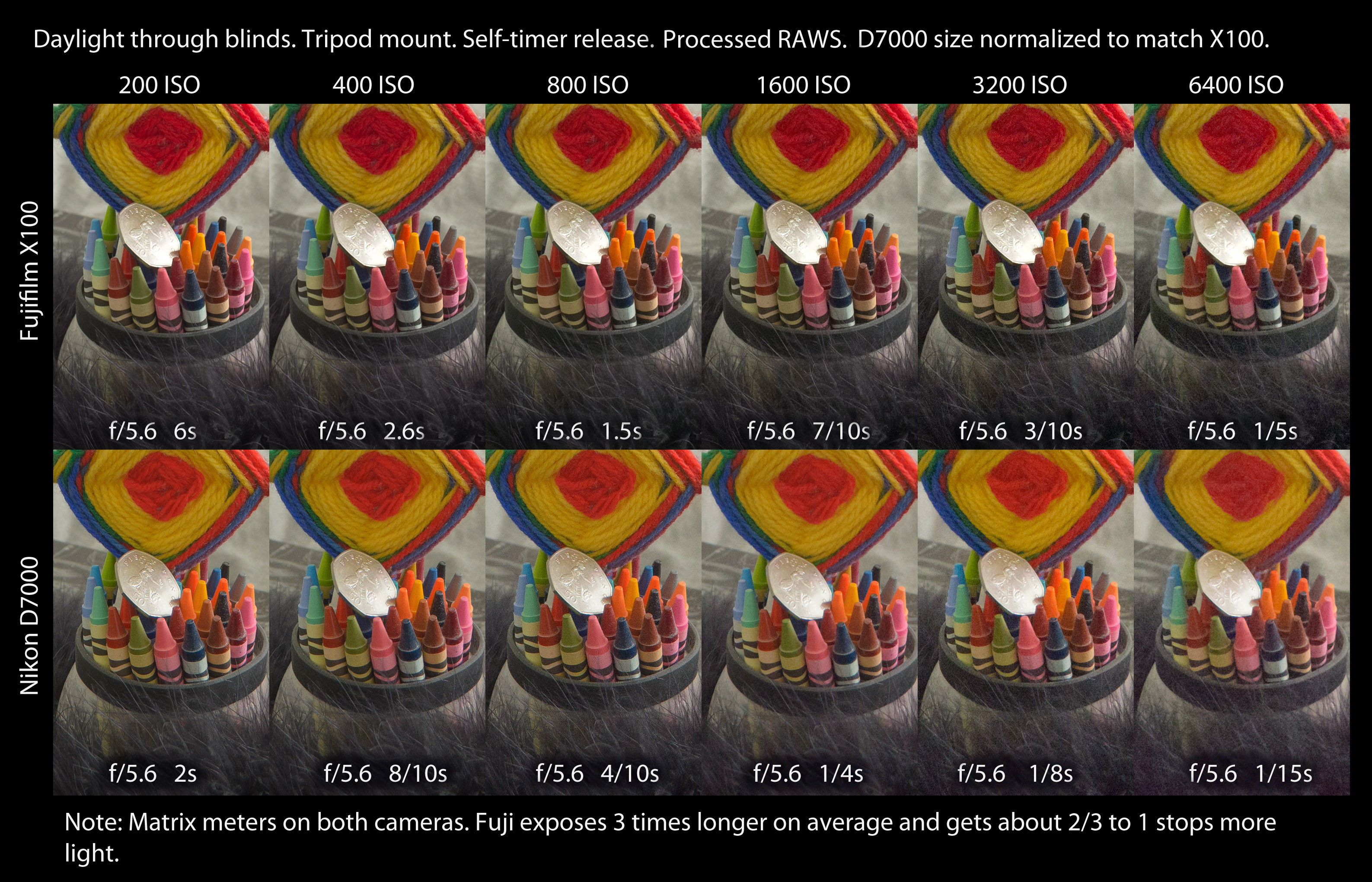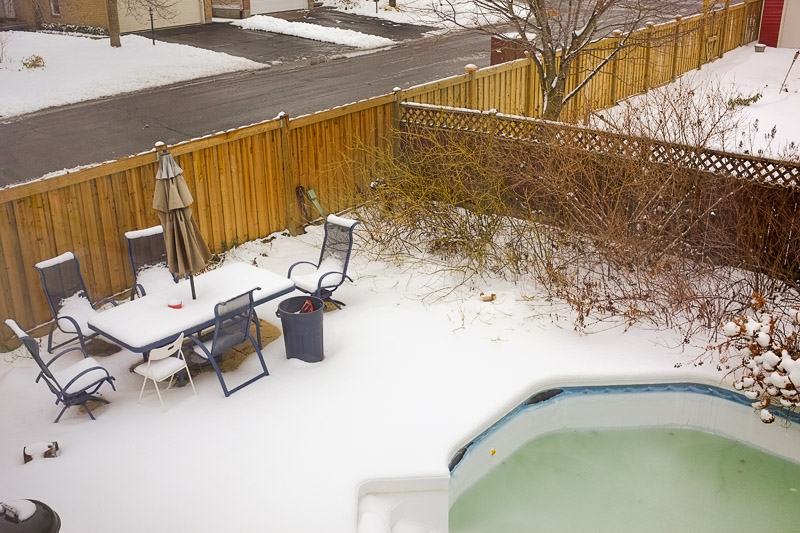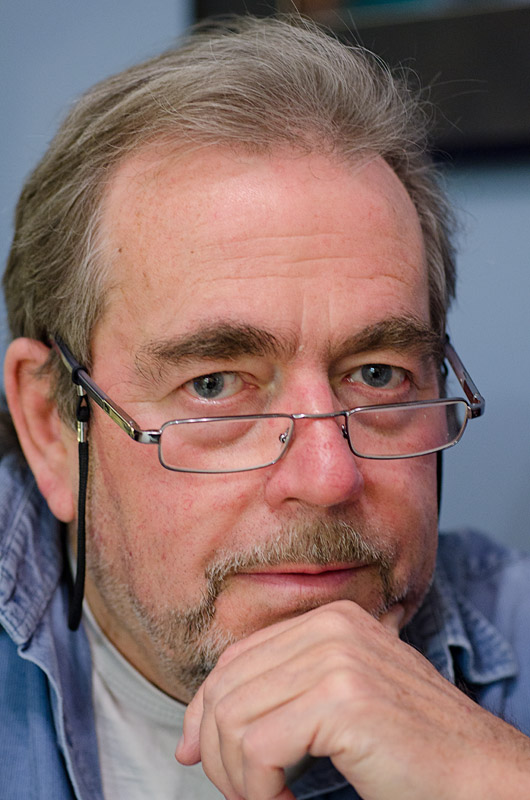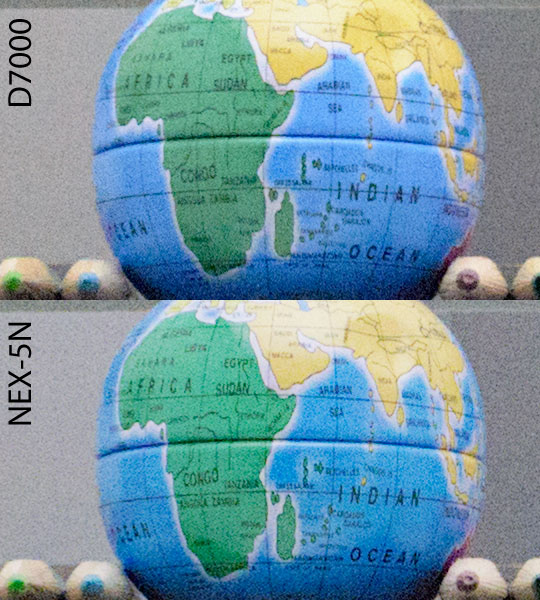I carried the F550 with me the last few days and thought I’d show the stuff I’ve shot. These are snapshots, so don’t expect any kind of art. This is the stuff that mom and pop (and I) shoot just for fun.
So, on the way into work on Wednesday, I took a route that brought me past this corn field, which was just cleared a few days before, leaving a clear view of a small tree that I call “The Sentinel.” I’ve shot it many times with many lenses and bodies and thought I would shoot it again with the F550EXR and see how RAW came out.
Well, I managed to have a world-class brain fart while shooting it and my ISO was stuck at 400, a bad thing when it is not needed. Since the camera was in P mode, it was forced to choose f/11, which is not a big deal as that aperture at full zoom is implemented by an ND filter, and therefore does not affect diffraction. The depth of field, however, is approximately equivalent to a full frame camera set at f/63 … so there is no issue getting everything in focus.
The Sentinel is several hundred feet away from me here, and the stand of trees is at least another hundred feet behind it. It turns out that the acuity of the image is not harmed all that much by the ISO, so I quite like this rendering.

I later met a friend for lunch. He moved to another division a few years ago and works in a different building, so we met at the local Phnom Phen restaurant, an excellent spot for Cambodian / Thai curries.
On the way in, I noticed this Corolla in the parking lot, and just had to capture the cool lettering on the back.

One would consider that a warning to potential suitors 
The restaurant was pretty empty when I arrived, and I caught my usual indoor image from my usual table … you’ve all seen this scene before … ACR handles the distortions very well at 24mm, and I don’t find that I am fighting lots of blur or anything, although the details in the corners here are too close to be in focus.
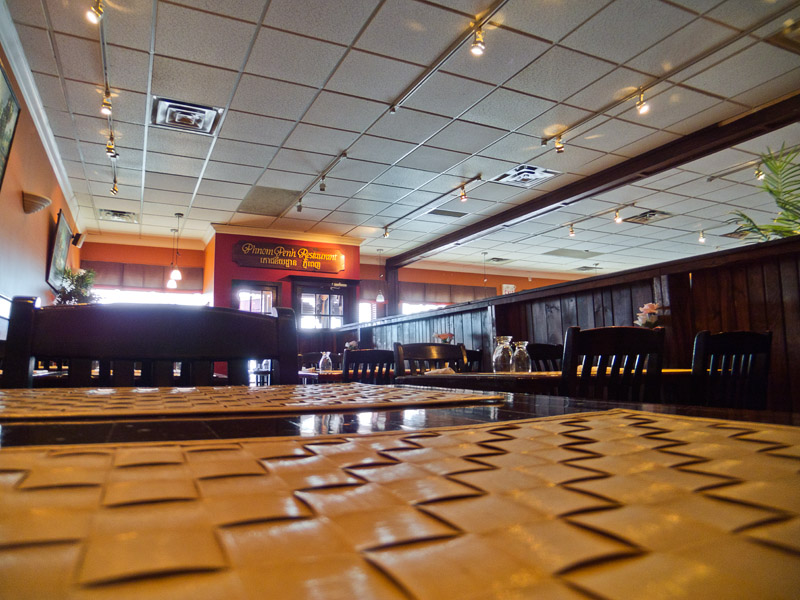
Steve opened the bidding with the C6 dish, called “Golden Chicken” and he ordered it spicy, which generally means that your mouth hurts for a while after the meal. I raised him a C6 with beef, and he called. So two C6 beef showed up a while later …

Tender, thinly sliced beef with Jalapeno slices and green beans in the tastiest curry you ever had. I think there are chopped peanuts as well, so it has a hint of Satay about it. Awesome does not do it justice.
So after chatting about various subjects (we have a surprising amount in common), we both had to split to get to our next meetings. As we walked out, I noticed his new car parked right beside Apocalypstic so I shot it from the back and the front. It’s pretty nice, for a car that is worth a mere hundred grand. This is something we do not have in common, my was was about 1/5 the cost new. And I suspect is much less pleasant to drive.

That’s Topaz Adjust 4 working the pseudo-HDR look. I prefer this style for cars as it draws out details and creates a lot of depth in the paint that is otherwise not there. In other words, it makes boring car shots something that can hold the interest a few more seconds.
Of course, from the front, it is even cooler.

Later that night, I noticed for the first time that our sister building had been invaded by the company that used to be the dominant tenant at 550 March Road back when I was general manager and engineering director at e.mediate networks ltd, a small startup that built a pretty impressive VOIP switch that spoke and listened using SOTA speech technologies. Anyway, Rhode & Schwartz was the tenant whose name was on top of the sign and we, as a small startup, were at the bottom of the sign.
Here, they obviously have taken a substantial portion of the building to get a sign that prominent.

So that was yesterday. Today, I arrived for an early meeting and saw the police training on several motorcycles. They were doing pylon stuff, zigging and zagging away. When I pulled in a parked, they were having some sort of meeting way out in the lot.
Of course, another brain fart caused their yellow jackets to blow out in the sunlight, so I had to process this as a B&W, which I think looks fine for what it is. I.e. a snap shot (remember that I never purport that I am an arteest.)

This B&W conversion was done with the image->calculations… menu item. This thing lets you mix the RGB channels in monochrome through various filters and with some or all inverted. I generally use the red filter twice and then blend with a mask set to red filter but inverted. This creates a high contrast image that can be quite pleasing. I further adjusted contrast though on the above image.
I had a long, long meeting this afternoon with an eclectic team of people to work out a pretty fascinating way of xxxxxxxxxx xxxx xxxxxxx xx xx xxxxxx xxxx xxxxxxxxxx. Nuff’ said, since revealing any more requires that I hunt each of you down and eliminate the leak. Here, though, is a sneak peek at a future feature that will blow your minds …

Later, the boys and I thought we’d try a new local restaurant calls SPUDS, which is owned by a friend we have known since 1990 (the year my youngest was born.) He built a rather large empire of pizza shops all over southeastern Ontario and eventually retired. Now, he’s come back with this fantastic establishment, partnering with a family member to create the best Poutine experience you will probably have in your life.
This is the Montrealer, a Poutine with Russet potatoes from Quebec, real cheese curds, rich beef peppercorn gravy and chopped smoked meat. To die for (and yes, it is obviously a heart-attack in a box – get over it) …

For those who are curious, these indoor shots are mostly 3200 ISO images, and it makes me chuckle when people on a certain photography forum talk about the new Fuji X10, a marvelous camera by the way, as “good to about 400 ISO” and such. Talk about confused … this little 1/2” sensor makes images that look terrific here and would obviously make perfectly good small prints. So the much larger sensor on the X10 will have no trouble getting excellent 3200ISO images indoors.
Here are a couple of shots of the outside of the store. The first is shot at +2/3EV to emphasize the inside of the store, and the second at –1EV to try to preserve the red sign.


Obviously, you should always, always, always shoot at –1EV if you want to save your highlights at night. The camera is trying to raise the whole exposure to mid-grey because the scene is dark, so the light will blow – in this case the red channel specifically – and you probably want to prevent that. By shooting at –1EV, I can then raise the shadows a bit in ACR and I get a nicer overall look …
So that was the last two days. This camera remains a ton of fun …







